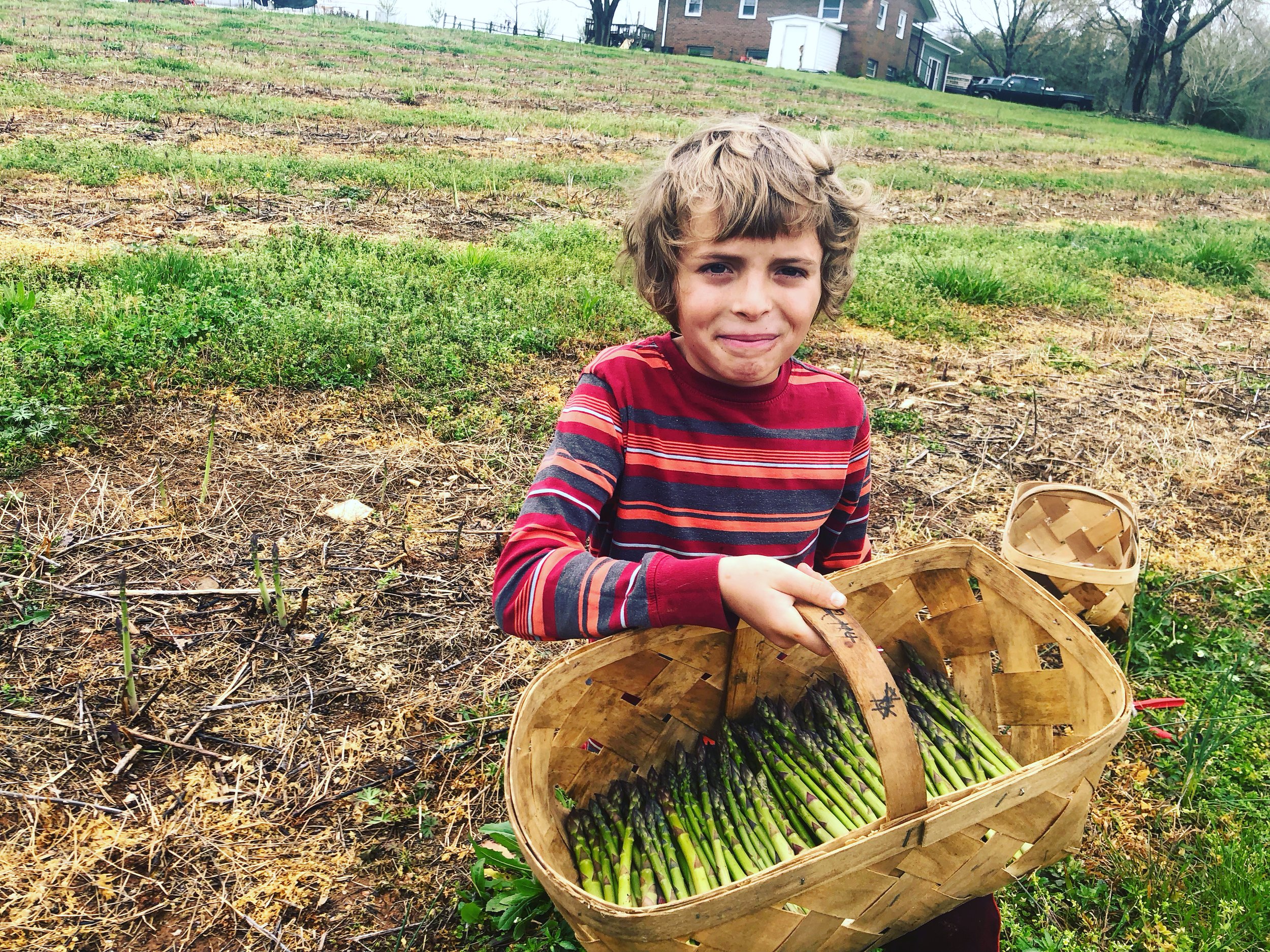Asparagus
Asparagus is a commitment.
We started our patch 7 years ago with 6,000, 1 year old crowns, that looked like pale brown octopus.
Obed Harvesting in the Asparagus
We dug a one foot trench and laid the crowns end to end. Then we covered them, and waited, and waited. It was two seasons before we harvested any for eating or selling to allow the root systems to grown and develop into a dense colony of rhizomes, but, a well cared for patch can continue to produce for up to 20 years!
Asparagus field in full summer frond
As the season heats up, the spears begin to open more quickly and we stop harvesting to allow them to become tall, fern-like fronds. These fronds allow the plants to photosynthesis and continue to build the root systems for a strong, healthy patch. It is also a great home for small animals and birds. Each winter we cut the dead brown asparagus fronds, burn the stubble to put the nutrients back in the soil and prevent weeds, and wait for those first, warm, spring days for the spears to start poking through the ground.
Asparagus is one of our shortest season crops, typically encompassing only the month of April in our area of North Carolina. And while it only takes that long for us to tire of bending to ground level to cut the spears, (everyday… as Asparagus can grow several inches a day!) it is a spring treat we love to be able to give our customers, so read on for some tips for storing, cooking and preserving Asparagus to get the most of it!
Prepping Asparagus for Market
Storage:
When stored properly, Asparagus can have a shelf life of over a week.
There are several ways to keep your asparagus moist and hydrated.
1.) Similar to cut flowers. Trim ends slightly and store in a jar of water in your refrigerator, covered with a ziplock bag. If you want to keep it for and extended period, check and change water as needed when slimy or smelling.
2.) Wash, shake off excess water and store loosely wrapped in a grocery or produce bag in the refrigerator. Wrap in a paper towel first if desired to maitan moisture level.
Preserving:
1.) Blanching and freezing.
Prepare the asparagus by trimming the ends and submerging in boiling water for 2-3 minuets until slightly tender plunge into a cold ice bath, shake dry and then pack tightly into freezer bags, removing as much air as possible.
2.) Pickling
Trim Asparagus to one inch shorter than your jar size (wide-mouth pint jars tend to work best).
Pack raw asparagus upright in the jars and follow an approved pickling recipe to your taste - this website has several recipes and great tips on approved water-bath canning recipes- Practical Self Reliance-
Recipes
While I often tend to go for the simple cooking methods of grilling, roasting or steaming, asparagus is a versatile ingredient that can be used in soups, alfredos, curries or even raw in salads. Below find some links to basic methods and more adventurous ways to cook this spring favorite!



